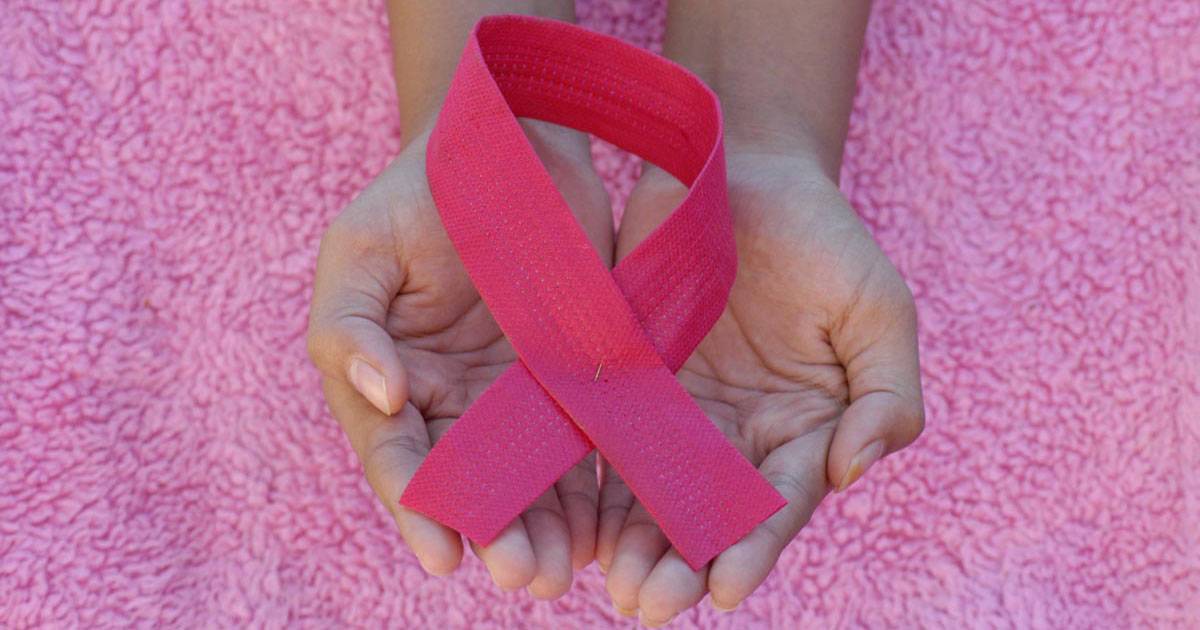July is here and this means it’s time to once again remind Filipinos to be mindful about nutrition and wellness, as we celebrate the 47th National Nutrition Month.
This year’s theme aims to strengthen the Philippines’ continuing efforts in combating malnutrition. By keeping a close watch over the first 1,000 days of adopting nutrition and wellness practices, we acknowledge and underscore the importance of proper education and guidance in combating malnutrition at home, apart from offering nutrition services one needs to stay healthy.
How do you ensure proper nutrition and wellness, and what specific practices are necessary to battle malnutrition?
What are malnutrition and its many forms?
The World Health Organization describes malnutrition as “deficiencies, excesses, or imbalances in a person’s intake of energy and/or nutrients.”
Therefore, malnutrition can be categorized into:
- Undernutrition. This form of malnutrition refers to a deficiency in calories and essential vitamins and minerals which can lead to stunted growth, being underweight, and micronutrient insufficiencies.
- Obesity and diet-related non-communicable diseases. It’s often a misconception that overweight individuals are not malnourished. In fact, overweight individuals may suffer from these forms of malnutrition. Examples of diet-related non-communicable diseases are diabetes and heart diseases.
Malnutrition in the Philippines
A recent nutrition study led by the National Nutrition Council (NNC) further showed that problems in nutrition and wellness continue to be pervasive in the Philippines.
Results of the study showed that, as of 2018, a little over 30% of children under the age of five are stunted, about 5% are wasted, and 19% are underweight.
These sobering figures and the persistent lack of community awareness on key strategies to address malnutrition, has prompted the nation’s nutrition council to continually highlight malnutrition-related issues during the yearly Nutrition Month in July.
Competent medical services in the Philippines are also participating to help improve nutrition-and-wellness education in the country. The Hospital At Maayo wellness hub aligns with the NNC’s goals to end malnutrition, starting at home. Their website contains a wealth of actionable tips and information, including the ones below:
1. Know the important nutrients your body needs.
 Photo courtesy of Louis Hansel via Unsplash
Photo courtesy of Louis Hansel via Unsplash
Nutrition and wellness begin with learning about the building blocks that help your body function properly. These building blocks are composed of essential and non-essential nutrients that help support the various functions of your body. Know the difference between each type of nutrients, and determine what your body needs.
Essential versus non-essential nutrients
- Essential nutrients come from nutritional sources outside your body such as food and dietary supplements. These contain specific components that the body doesn’t naturally produce but are essential to maintain its optimal function, health, and wellness.
- Non-essential nutrients are naturally produced in the body and need not be obtained from external sources such as food or dietary supplements.
So, what kinds of essential nutrients do you need to consume daily?
Essential micronutrients and macronutrients
Nutrients are categorized into:
- Micronutrients. These nutritional components are composed of vitamins and trace minerals derived from food or dietary supplements which you can consume in minute amounts. These include vitamins B6, C, E, and the minerals magnesium and zinc which can help support bodily functions and strengthen your immunity.
- Macronutrients. These are nutritional components which you need to consume a lot, including water, protein, carbohydrates, and fats. Each of these macronutrients serves to support specific functions in the body:
- Proteins help to build and repair muscular and other tissues;
- Carbohydrates provide fuel and energy;
- Fats serve as an alternative source of energy and assist in absorbing certain kinds of vitamins; and
- Water is essential to various body functions, like body temperature regulation and transporting other nutrients, to name a few.
Knowing the roles of each type of nutrient in your body is the first step in avoiding malnutrition. Invest in your health by incorporating different types of food to your diet. Ensure that you consume the daily recommended amounts of these nutrients.
2. Foster a positive relationship with food.
 Photo courtesy of Pablo Merchán Montes via Unsplash
Photo courtesy of Pablo Merchán Montes via Unsplash
Additionally, preventing malnutrition can be made possible by adopting a positive relationship with food. Improper diet begins from a negative attitude towards certain types of food such as vegetables and fruits or other carbohydrates.
Make eating fun and enjoyable. Don’t force children to eat vegetables and suppress them from enjoying sweets. This will only result in them having negative associations with vegetables and fruits. Instead, introduce them to all kinds of food and educate them about the importance each one plays.
Organize activities that will help your children see vegetables and fruits more positively such as hosting a vegetable tasting event or encouraging them to grow a mini vegetable garden.
3. Calculate your calorie intake.
 Photo courtesy of Artur Łuczka via Unsplash
Photo courtesy of Artur Łuczka via Unsplash
Calories are units of energy found in food that our body burns up to provide energy. People with physical health goals count the calories they take to monitor the supply of food that they are putting into their bodies.
The chart from a book chapter by Klen and Jeejeebhoy (page 3 out of 18) shows the following Daily Energy Requirements of different age groups.
Knowing your calorie count and activity level is important in determining your nutritional requirements. Generally, people who work out and are physically active require more calories since they also burn more energy. It’s also important to note that you still burn calories while sitting or lying down – but not much, in contrast to being active
Online calorie calculators can help you determine your daily nutritional and caloric requirements. However, nothing beats an executive assessment by medical professionals to arrive at more accurate results.
4. Involve kids in the joy of meal preparations.
 Photo courtesy of August de Richeliu via Pexels
Photo courtesy of August de Richeliu via Pexels
Kids are naturally fascinated by their surroundings. So involving them in cooking and meal preparations can help them gain a wider perspective on nutrition.
Make everything an opportunity for them to learn. Ask them what kinds of food they want to eat and explain to them the benefits and possible effects if they do not mind what they eat.
To help them better understand where the food they eat comes from, take your kids along to your next grocery errand. This can help encourage them to appreciate each meal served to them. As well as to let them know that cooking and meal preparation are crafts that involve a meticulous and well-thought process.
5. Establish a consistent meal schedule.
 Photo courtesy of Free-Photos via Pixabay
Photo courtesy of Free-Photos via Pixabay
If you work from home, you might find it difficult to separate your personal time from your daily tasks. Sometimes, this could even lead to skipping breakfast or lunch.
Strive to be a model of healthy practices to your family by prioritizing your nutritional needs and wellness by eating right, enough, and on time.
The Hospital at Maayo suggests fixing your circadian rhythm or sleeping schedule to prevent skipping certain meals within the day. Strive to sleep at the same time each night – ideally a few hours after dinner – to help discourage midnight snacking, too.
Avoiding malnutrition doesn’t only involve planning your meals well, but also paying attention to supporting aspects of your life.
6. Develop a food-first approach for the elderly.
 Photo courtesy of Andrea Picaquadio via Pexels
Photo courtesy of Andrea Picaquadio via Pexels
Children aren’t the only age group vulnerable to malnutrition. A study revealed that malnutrition among seniors adversely affects their well-being, resulting in major repercussions that can compromise their physical and mental well-being.
A recommended medical strategy to deal with this problem is a food-first approach. This refers to encouraging the elderly to eat small yet highly nutritious meals more often throughout the day.
This strategy helps to minimize the downside of having to eat heavy meals which can be more challenging for the elderly.
7. Continuously educate yourself in nutrition.
 Photo courtesy of Karolina Grabowska via Pexels
Photo courtesy of Karolina Grabowska via Pexels
Acquiring basic knowledge in approaching nutrition is a great step to avoid malnourishment in the household. Remember that information abounds; so read and research before believing diet and nutrition-related posts on social media – especially those that claim to be the magic bullet against all kinds of diseases.
Each part of your body needs special care. Taking care of your liver, heart, lungs, and other vital organs requires attention to the kind of food you eat and the activities you engage in.
Above everything else, always consult your healthcare provider before making any major dietary change.
Health is wealth, and your knowledge about nutrition is your primary investment to avoid malnutrition. Take great care of yourself, first and foremost, and be mindful of factors that could potentially affect your overall well-being.
Did you learn a great deal on how to effectively keep malnutrition at bay? For more nutrition-related articles, visit The Hospital at Maayo.


























Leave a Reply